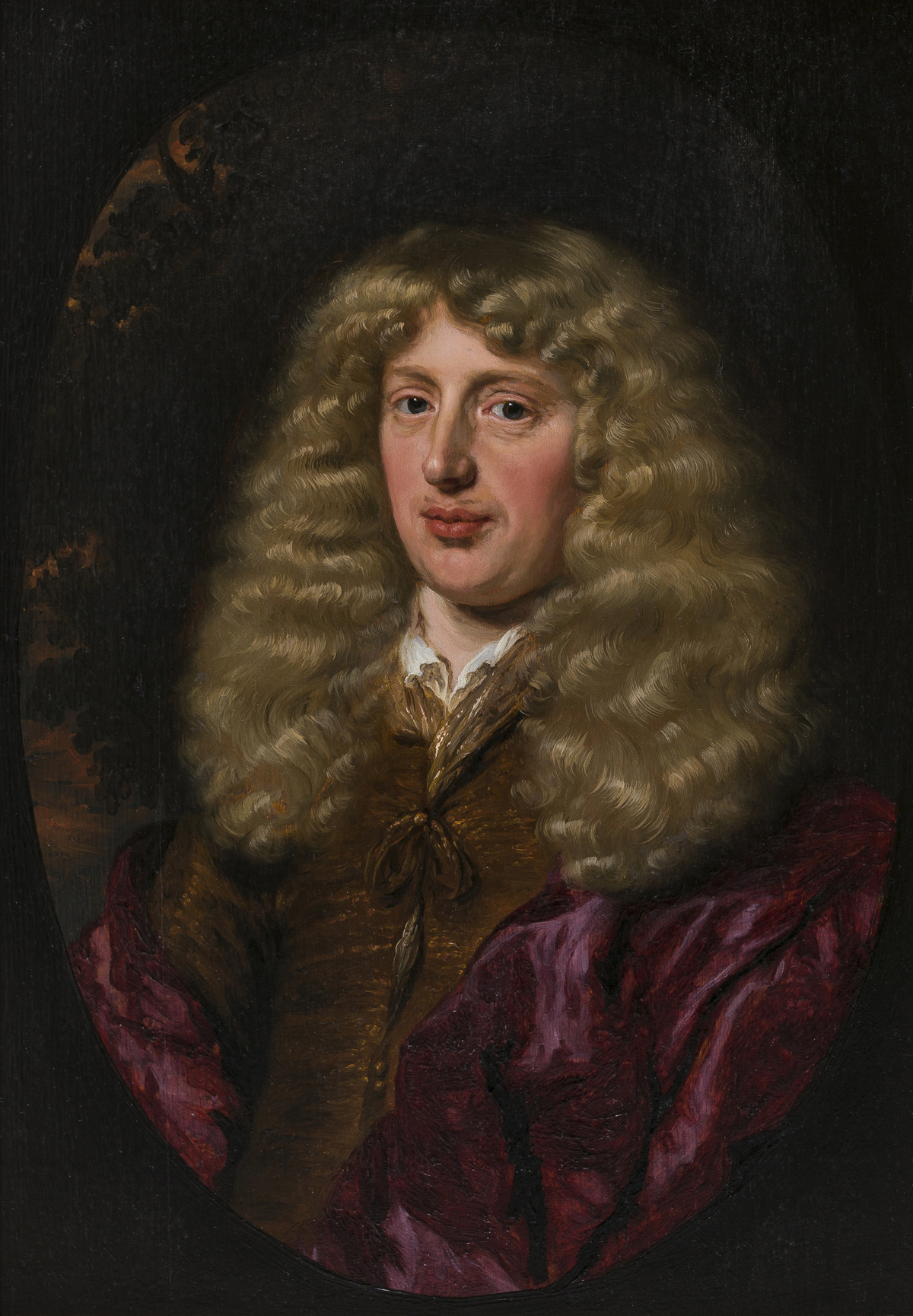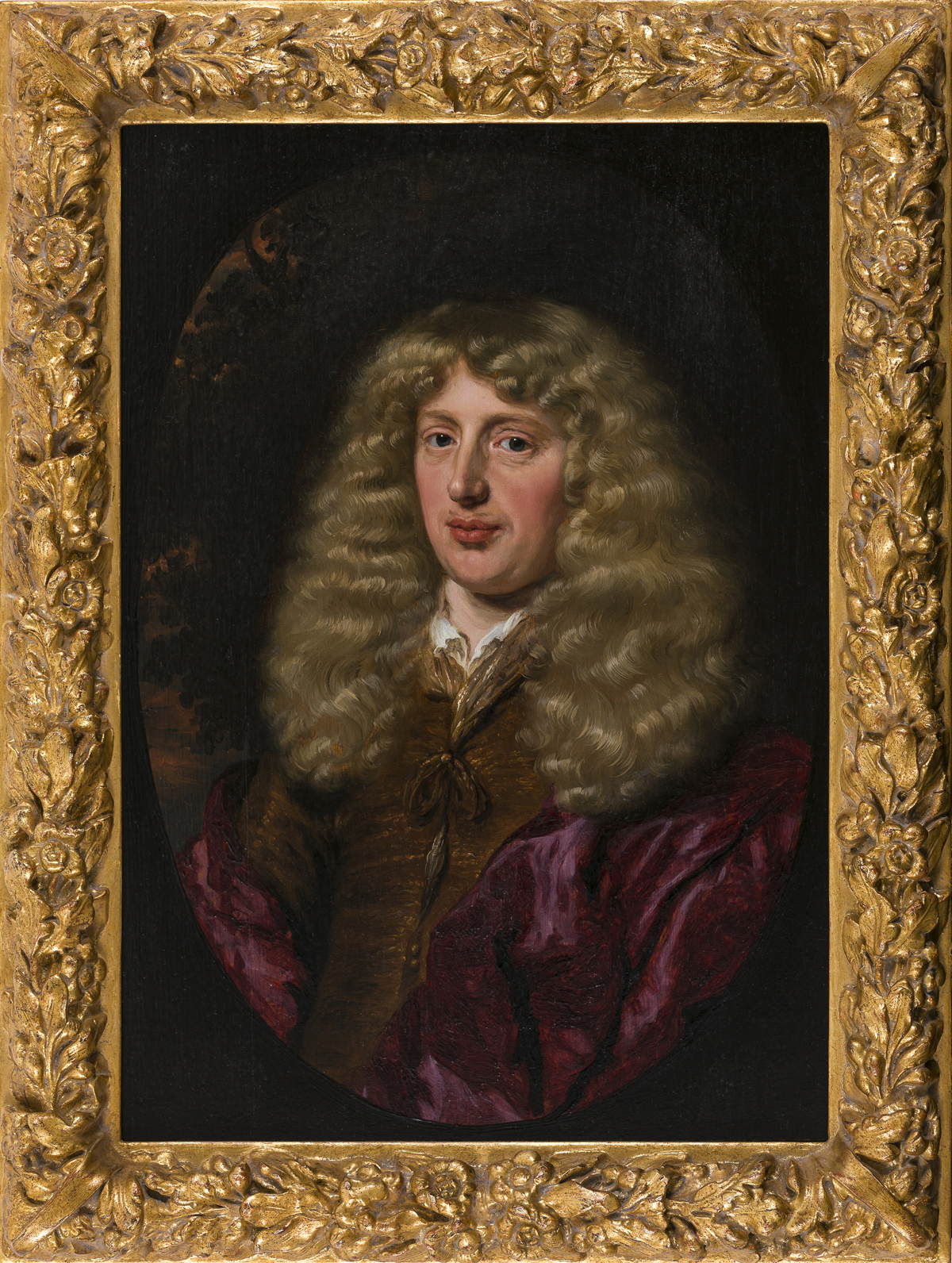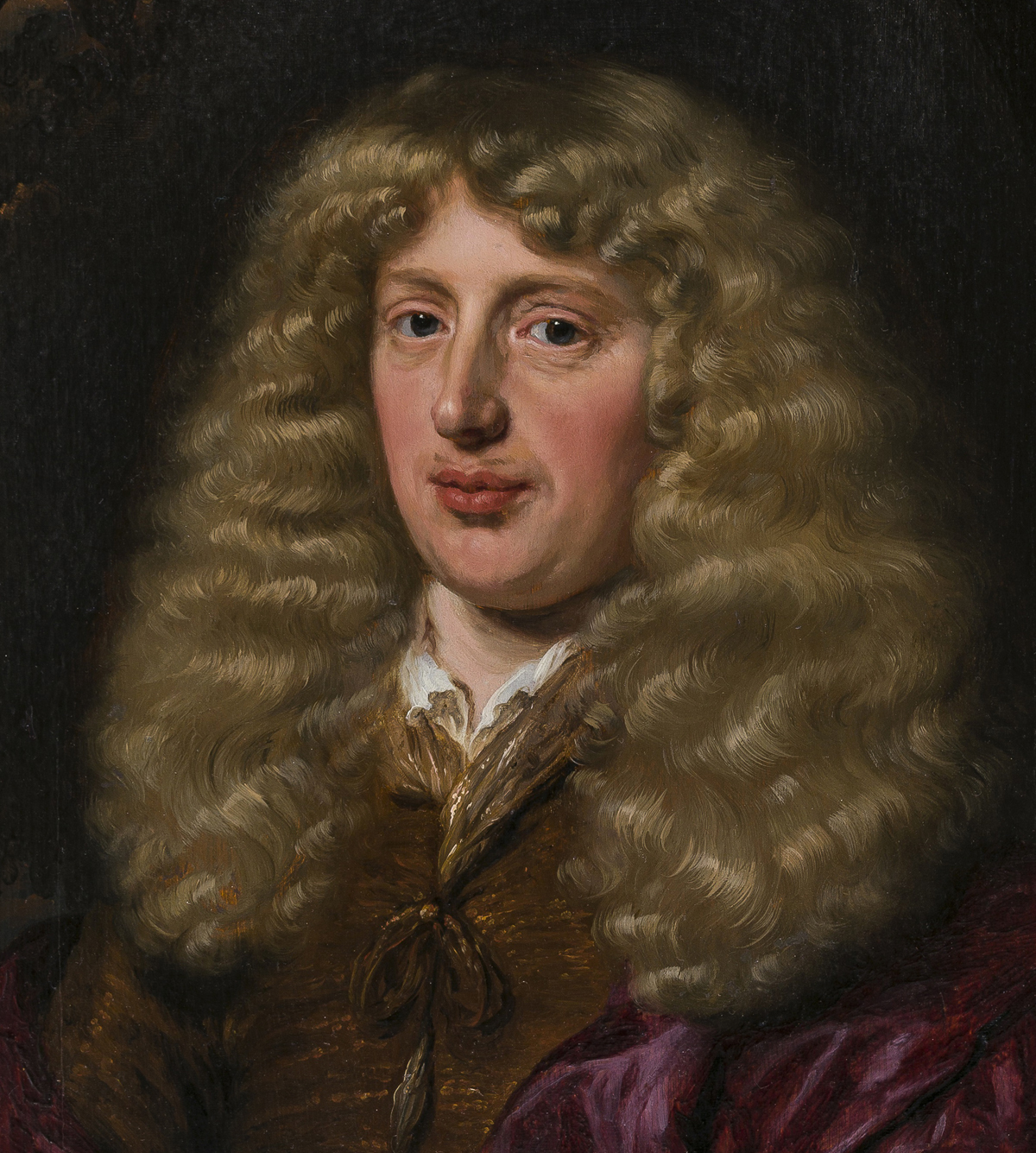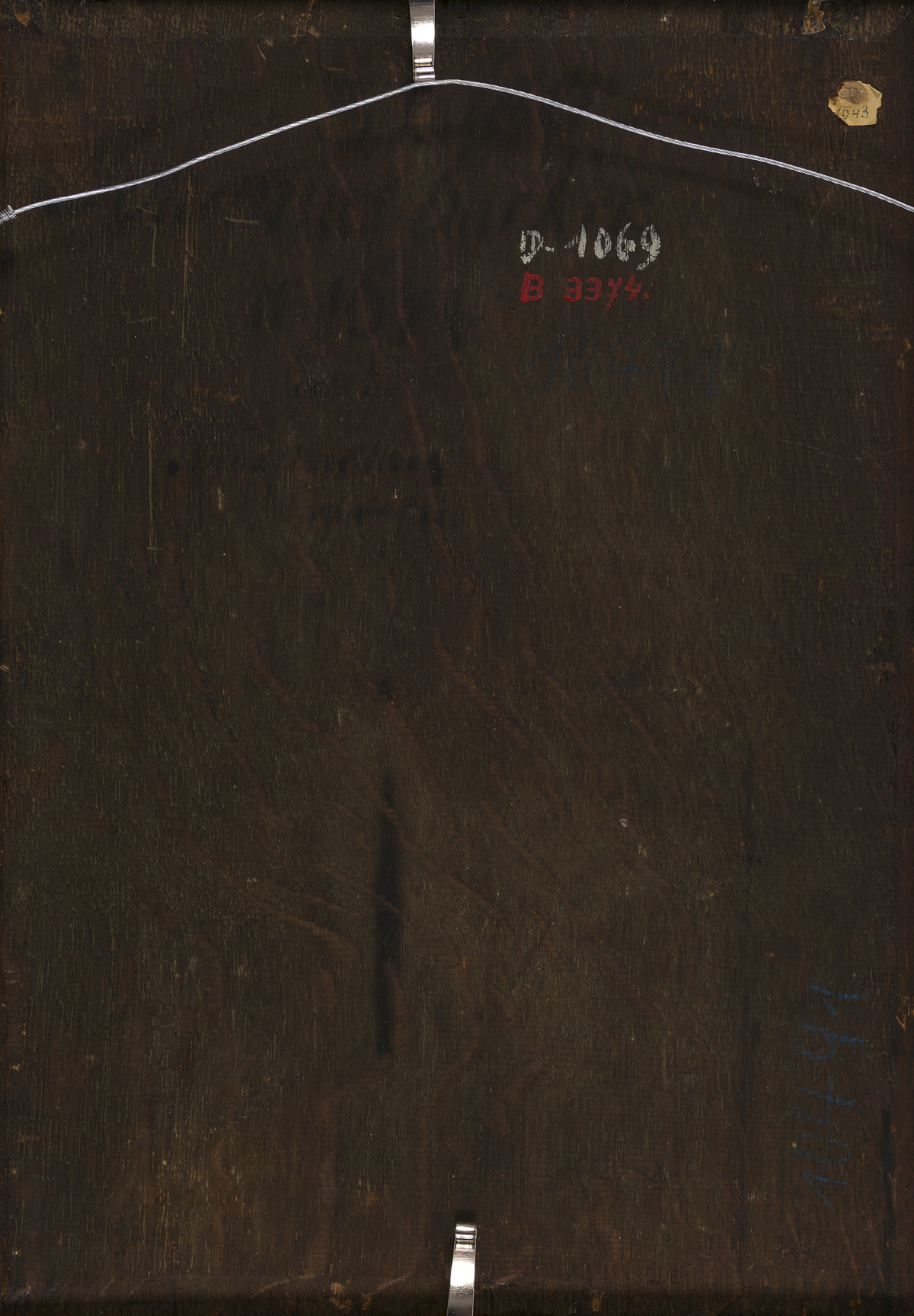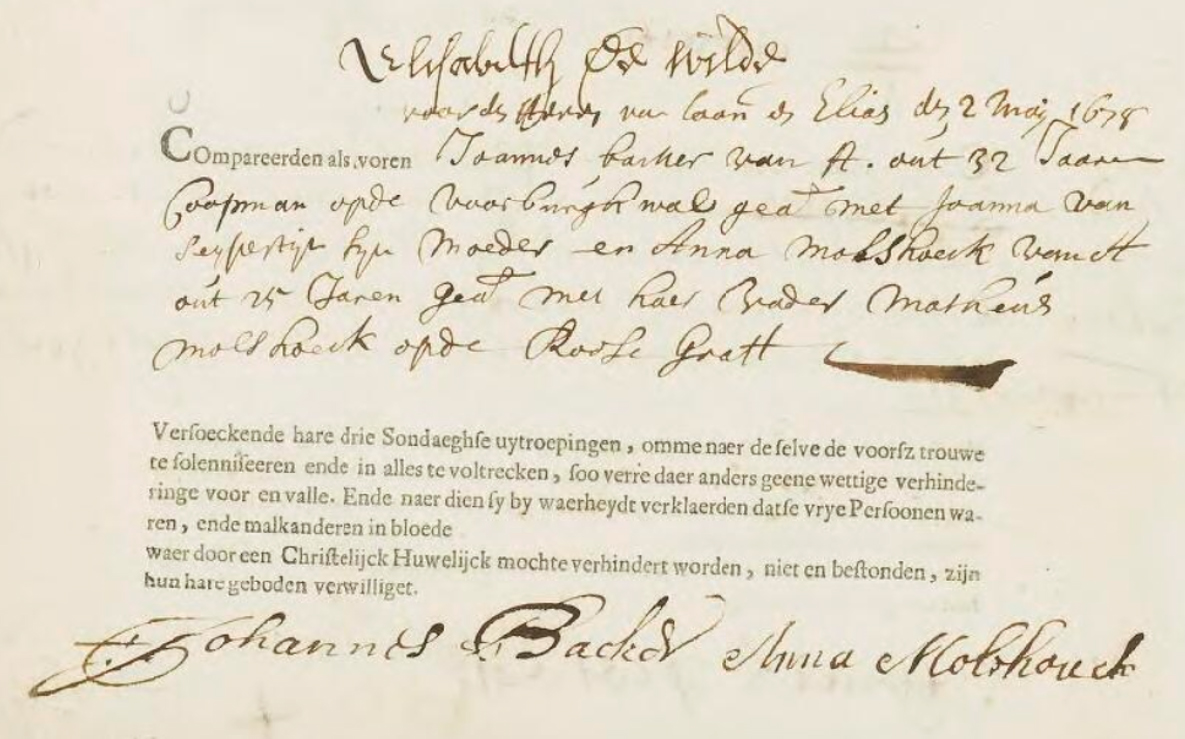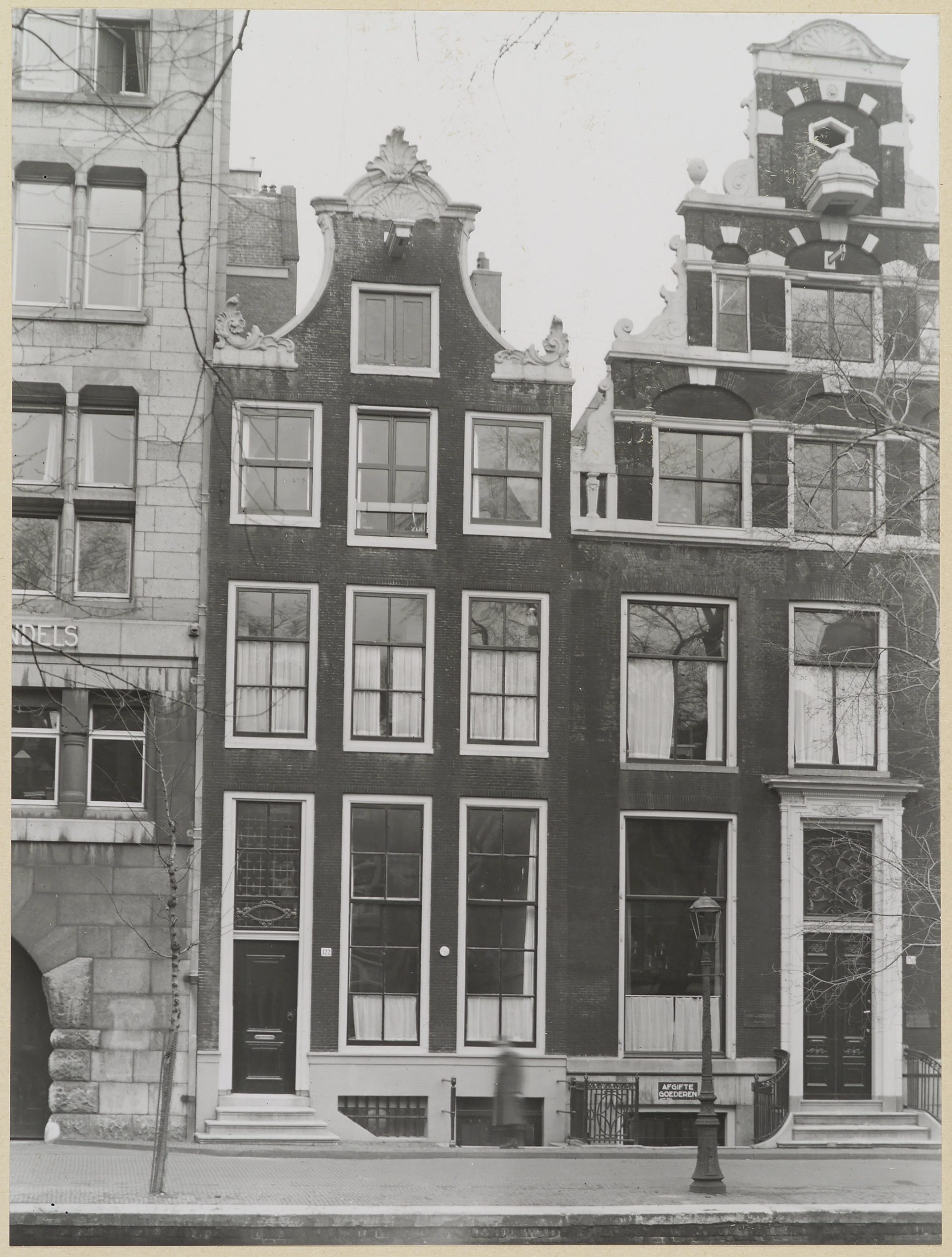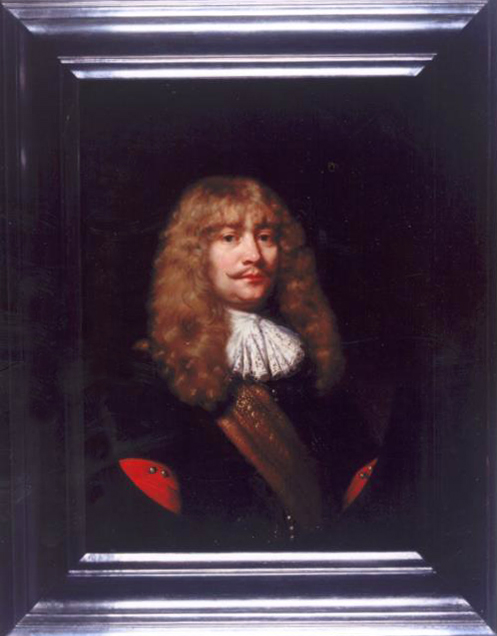NICOLAES MAES (Dordrecht 1634 – 1693 Amsterdam)
Nicolaes Maes (Dordrecht 1634 –1693 Amsterdam)
Portrait of Johannes Backer (1643–1704)
Oil on panel, 44.3 x 30.9 cm (17.4 x 12.2 inch), presented in a modern giltwood frame of 17th-century model
Faintly inscribed on the reverse in black ink or paint, possibly by the artist: ‘31 Jaer[?] / Johannes backer / Ao 1674 / Nicolaes Maes / Pinxit’
Provenance
Private collection, France
***
Before studying painting with Rembrandt van Rijn in Amsterdam, probably between about 1648 and 1653, Nicolaes Maes learned to draw from a local Dordrecht master.1 Subsequently, he returned home to embark on an independent career. By the 1650s he had developed a reputation for painting the intimate life of women and children; his finest pictures capture aspects of Rembrandt's tenderness and intimacy. Maes's scenes often include vignettes such as a cat stealing the dinner of an old woman as she prays. By representing an interior as a suite of rooms rather than a three-wall, one-room enclosure, Maes had great impact on the Delft painters Johannes Vermeer and Pieter de Hooch.
About 1660 Maes began specializing in portraits, becoming wildly successful by abandoning his Rembrandtesque style for the bright colours and studied elegance of Flemish artists such as Anthony van Dyck. Arnold Houbraken's 1721 biography described the transformation: Maes ‘learned the art of painting from Rembrandt but lost that way of painting early, particularly when he took up portraiture and discovered that young ladies preferred white to brown.’ Stylistically, this painting would appear to date from the period around 1673-74, when many sitters of a younger generation were providing commissions to Maes. These younger generations tended to wear more colourful clothes, as from the middle of the seventeenth century the colour palette of clothing became more varied, influenced by Flanders.
The sitter is identified on the back of the panel. It is likely that many portraits by Maes had such identifications on the reverse, but especially in the case of paintings on canvas, these have often been obscured by relining, while in other cases the inscriptions were obliterated when portraits were sold by impoverished families. Johannes Backer was baptised in Amsterdam on 18 January 1643.2 He was the first child of the merchant Gerrit Jansz Backer and Jannetje Rutgers Sijbesteijn, who had married in April 1641. Johannes’s branch of the Backer family appears to be unrelated to the well-known Amsterdam notable Backer family. Johannes, who like his father also became a merchant, married Anna Molshoeck in May 1675 (fig.), when he was living on the Voorburgwal near the Rozegracht, in a house named ‘Het wapen van Oudewater’. The new family lived in a house on the Herengracht, the current number 120, whose façade survives more or less intact to this day, and they also owned the adjoining house, number 122, which was modernised around 1760 (fig.).
Johannes died in 1704 and was buried on 24 December, while Anna died in December 1706. Following her decease, an inventory of the house was drawn up, which provides fascinating insight into their worldly belongings. As was usual during the period, family portraits were not mentioned, as they were normally inherited by the eldest son. Their son Mattheus Molshoeck Backer (1677–1719) married Anna Bicker (1682–1721) in 1705; Anna’s mother was a Six by birth, and these marriages illustrate the ascending nature of the family of Johannes Backer, as the Bickers and Sixes were among Amsterdam’s elite.
This painting is in a superb state of conservation, with delicate glazes and rich impastos still intact. As is typical for Maes, the artist has captured the personality of the sitter with great sensitivity. Similar portraits by Maes can be found in many of the world’s leading museums, including the Rijksmuseum in Amsterdam, the Mauritshuis in The Hague and the Metropolitan Museum in New York. Our painting is particularly close to Maes’s portrait of Jan van Loon (1633–1685) of circa 1673 in the Museum van Loon, Amsterdam, which is also painted on panel (fig.).3 The artist only painted a small number of portraits of Amsterdam sitters exactly around the time of his relocation to that city in 1673, and then changed to canvas.
A wonderful pair of pendant portraits sold by us previously of the Leiden burgomaster Joost van Hoogenhouck and his wife can be found here and here.
1. For the artist, see León Krempel, Studien zu den datierten Gemälden des Nicolaes Maes (1634–1693), Petersberg 2000 and Ariane van Suchtelen a.o., Nicolaes Maes, exh. cat. Mauritshuis, The Hague 2019.
2. Extensive archival research on the sitter has been carried out by Geert Post and is available to interested parties.
3. Panel, 44 x 31.5 cm, signed ‘MAES’; inv. no. 1813; Old master paintings. An illustrated summary catalogue. Rijksdienst Beeldende Kunst/The Netherlandish Office for the Fine Arts, Zwolle-The Hague 1992, p. 184, no. 1549.
